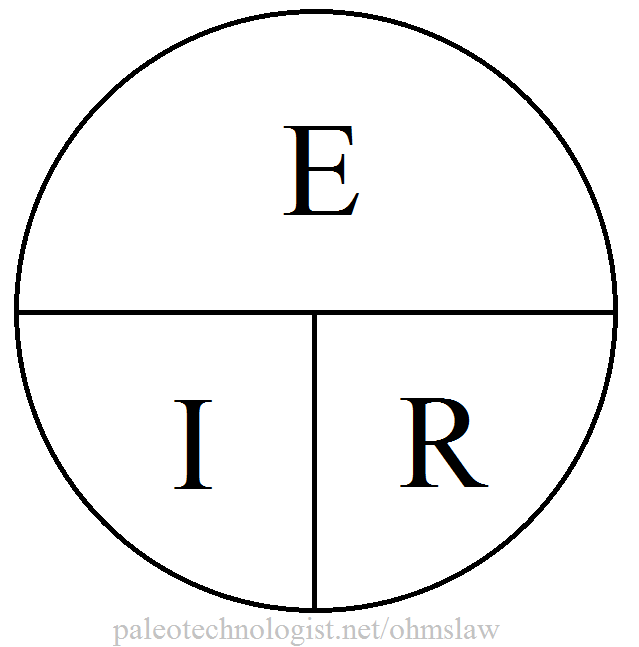Ohm’s Law is fundamental to understanding the three-way interaction between three of the most important concepts in electronics: Voltage, Current, and Resistance. Here is a quick overview of these concepts, from a DC-circuits viewpoint:
Voltage, measured in volts, is the difference in electrical potential between two points in a circuit. Voltage is always relative; giving the voltage at a certain point in the circuit is meaningless unless you specify what the reference point is. (Similarly, it would be meaningless to give your location as ten kilometers west, unless you also specified west of where.) The relativity of voltage is the reason that birds can safely land on power lines. The power line may be at hundreds or thousands of volts with respect to the ground, but if the birds don’t contact both points, the difference is meaningless.
Current, measured in amps, is the amount of electricity flowing through a certain point of the circuit (a connection, usually a wire) per second. Since current flow is specified at a certain point, it is absolute.
Resistance is a property of materials that relates current flow to the difference in voltage. The higher the resistance, the “harder” it is for current to flow through that material — and the higher the voltage will have to be in order to force a given amount of current through the material.
Intuitively, the three quantities can be thought of in terms of plumbing. This analogy works reasonably well, but don’t expect it to hold water (pardon the pun) for more complex circuits.
- Voltage can be thought of in terms of pressure — which is always a difference between two given points.
- Current can be thought of in terms of flow rate — how much electricity (or how much water) is going past a certain point in a given amount of time.
- Resistance can be thought of in terms of restricting the flow (of electricity, or water): if you want to move water at a given flow rate through a narrow, high-resistance pipe, it will take more pressure than if the pipe were larger. Similarly, it takes a greater voltage to move a given current through a high-resistance circuit than a low-resistance one.
The basic equation for Ohm’s Law, E=IR, can be expressed in three basic ways:
- E = IR : Voltage (E, for Electromotive force) is equal to Current (I) times Resistance (R). This means that if a current of I amps is flowing through a resistance of R ohms, there will be a difference in voltage of E volts across that resistor.
- I = E/R : Current is equal to Voltage divided by Resistance. This means that if you apply a voltage of E volts across a resistance of R ohms, the current flow will be equal to I amps.
- R = E/I : Resistance is equal to Voltage divided by Current. This means that if you pass a current of I amps through a resistor, and the voltage drop is E volts across that resistor, its resistance is equal to R ohms.
By solving the right form of this equation for the variable you want to find, you can determine what resistor to use, what the voltage will be for a given current and resistance, or what the current will be for a given voltage and resistance.
Perhaps the easiest way to remember Ohm’s Law is graphically:
Take the image above and cover the variable to solve for with your hand:
- Cover E, and you get I*R: Voltage is Current times Resistance.
- Cover I, and you get E/R: Current is Voltage over Resistance.
- Cover R, and you get E/I: Resistance is Voltage over Current.
Resistors actually turn out to be extremely useful when making electronic circuits. Some of their many uses will be covered in another article.



Great overview of Ohm’s law. Knowing the equations will help when trying to determine what resistor to use for a given project.